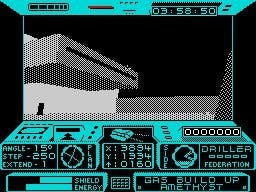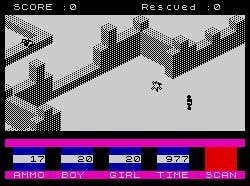Born Free: the History of the Openworld Game
From Adventure to Urban Chaos.
It's rather quaint to think that just over six years ago, we were all a-twitter at the prospect of Grand Theft Auto III and its swanky new 3D world. "How will that classic top-down gameplay work in 3D?" we mused, like big silly things. "Could it possibly beat Driver?" we pondered in all seriousness. Aah, innocent times.
Since then, of course, we've been swamped up to our chinsacks in three-dimensional sandbox games, most of them firmly in the naughty crime spree mould. To begin with, all such games were slapped with the rather dismissive "GTA clone" label, but is this really accurate? Certainly, most of these games have taken their inspiration from the sprawling cities and doowatchulike aesthetic of Grand Theft Auto, but Rockstar's finest was far from being the first openworld game.
For the purposes of this history lesson, let's split the GTA template into two distinct but equally vital gameplay elements. First we have the gameworld itself, a world with no levels or boss battles. An environment that you're free to explore however you choose. And we also have the structure of the game; non-linear and open-ended, leaving it up to the player to decide what tasks to tackle and when. Together these are the two pillars that hold up the modern free-roaming action-adventure genre. But would it surprise you to learn that this sort of free-roaming gameplay has been around for over twenty years? That there were games as long ago as 1991 that let you explore 3D polygon worlds in a variety of vehicles at your own pace? Would it surprise you? Would it? I hope so, or this is going to be a very short feature.

Way back in 1979, Warren Robinett's seminal Atari 2600 version of Adventure sowed the seeds of openworld gameplay, with an open plan flip-screen layout which allowed the player to wander freely around three castles and the (admittedly sparse) landscape in-between them. The goal was still rigid - find the golden chalice - but it was certainly not a linear experience. From this tiny acorn grew many gamey oaks, including pretty much the entire RPG genre, but for the sake of brevity we'll leave that branch of the free-roaming tree untouched for another time.
As the 1980s rolled around, this tentative baton of innovation was soon taken up by a variety of British programmers, then beavering away to squeeze as much juice as possible from the ZX Spectrum. The first game that can be convincingly linked to today's virtual cityscapes was the 1983 hit 3D Ant Attack. Developed by solid 3D pioneer Sandy White, the game cast you as a man (or woman) venturing into a city infested by giant ants in order to rescue your partner. Rendered in stark monochrome isometric 3D with solid shaded buildings, and even rudimentary shadows, the creepy sci-fi gothic world of Ant Attack remains a joy to explore - even if the aim of the game proves predictably simple by current standards.

The same year also saw the release of Atic Atac, the clip-clop adventure classic from the Stamper brothers and their beloved Ultimate Play The Game label. Owing much to Adventure in terms of concept, this top-down gem found you scurrying about a vast castle, searching for the pieces of a key that would allow you to escape. Made up of several floors, each linked by staircases and trapdoors, the game also boasted secret passages that could only be used by certain character types. Once again, while the overall goal was set in stone, players could happily spend hours ignoring their main quest, seeking out new areas or hunting down monsters such as Dracula, and Frankenstein instead.
Come 1984, and Sandy White followed Ant Attack with Zombie Zombie, another 3D city adventure (now in glorious Speccy colour!), while Atic Atac begat the sprawling jungle maze of Sabre Wulf. Both games continued the trend of eschewing pre-defined levels for a more laissez-faire approach to exploration, even though the core of the gameplay still hinged on the twin clichés of battling endless enemies and finding specific items to win.
However, 1984 also saw the release of arguably the first truly open-ended 3D adventure - Ian Bell and David Braben's Elite. Debuting on various Acorn systems, before being ported to every electronic device in the world including Major Morgan and those digital watches that had calculators in them, Elite quickly obsessed an entire generation. Admittedly, its rather abstract wireframe planets and spaceships make it a distant cousin of the sandbox genre in terms of style, with the likes of Freelancer as its more direct descendents, the ramifications of Elite's open-ended approach are still being felt in today's games.

